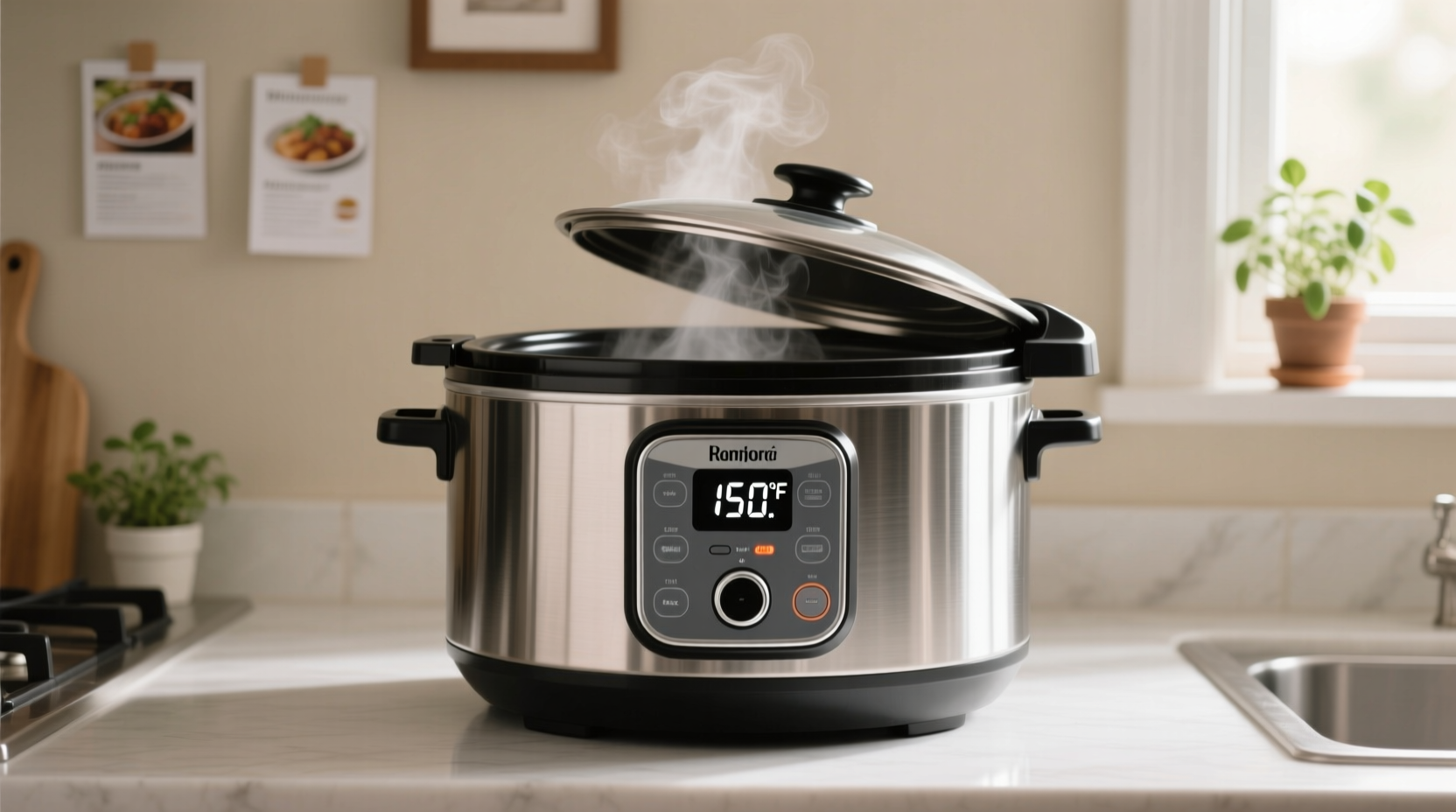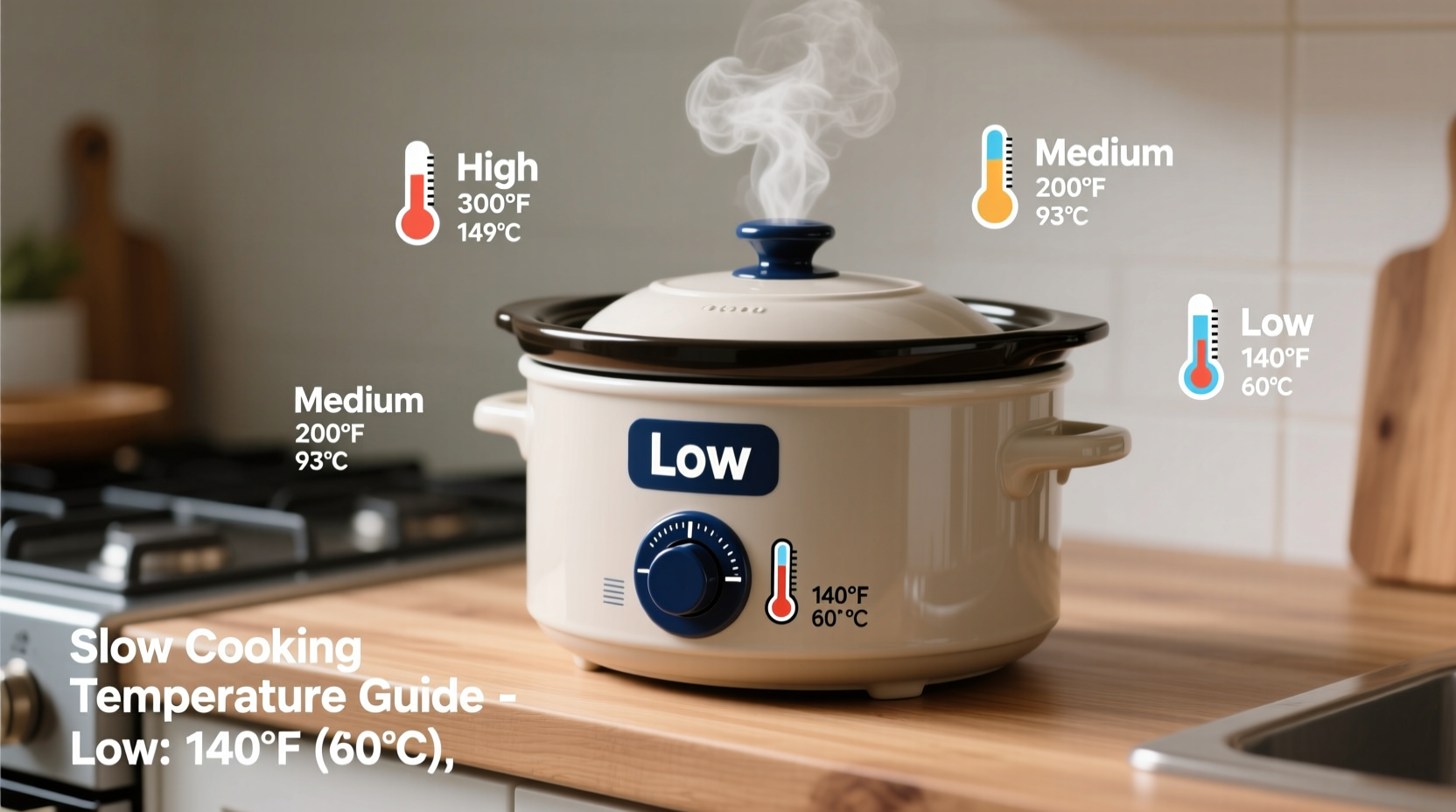Understanding your slow cooker's precise temperature settings isn't just kitchen trivia—it's the difference between fall-off-the-bone perfection and disappointing results. When you select "low" on your slow cooker, you're engaging a carefully calibrated heating system designed to transform inexpensive cuts of meat into culinary masterpieces through controlled, gentle heat over extended periods.
Why Slow Cooking Temperature Matters for Food Safety
Food safety authorities like the USDA emphasize that maintaining proper temperatures is critical when slow cooking. The "danger zone" for bacterial growth spans 40°F to 140°F, making it essential that your slow cooker reaches safe temperatures within two hours. The low setting's 190-200°F range ensures your food spends minimal time in this hazardous temperature bracket while still providing the gentle cooking environment that defines slow cooking.
| Slow Cooker Setting | Temperature Range | Equivalent Stovetop Setting | Recommended Cooking Time |
|---|---|---|---|
| Low | 190-200°F (88-93°C) | Simmer | 7-10 hours |
| High | 280-300°F (138-149°C) | Gentle boil | 3-4 hours |
| Warm | 165-175°F (74-80°C) | Very low simmer | 1-4 hours |
The Science Behind Low-Temperature Slow Cooking
At 190-200°F, slow cookers operate in what food scientists call the "collagen conversion zone." This precise temperature range efficiently breaks down tough connective tissues in meats like chuck roast, pork shoulder, and brisket without causing muscle fibers to contract excessively—the primary reason why slow-cooked meats become remarkably tender. Unlike high-heat methods that can dry out proteins, this gentle heat allows moisture to be retained while connective tissues gradually transform into gelatin.
Research from the National Center for Home Food Preservation confirms that maintaining temperatures above 185°F ensures food safety while optimizing texture development. Their studies show that cooking below 180°F risks extended time in the danger zone, while temperatures exceeding 205°F can lead to stringy, overcooked results.

Practical Tips for Maximizing Your Low Setting
Mastering the low setting requires more than just knowing the temperature. Professional chefs and home cooking experts have discovered several techniques that leverage this precise heat range:
- Preheat your slow cooker with a cup of warm water for 10 minutes before adding ingredients to minimize time spent in the danger zone
- Fill properly – maintain the 1/2 to 3/4 full range recommended by manufacturers for optimal heat distribution
- Resist the urge to peek – each lid removal can drop the internal temperature by 20°F, adding 20-30 minutes to cooking time
- Adjust liquid ratios – reduce liquids by 25% compared to stovetop recipes since evaporation is minimal
Common Misconceptions About Slow Cooking Temperatures
Many home cooks operate under incorrect assumptions about slow cooker temperatures that can compromise both safety and quality:
Myth: "The low setting just takes longer to reach the same temperature as high."
Fact: These are distinct temperature ranges with different culinary outcomes—not merely time variations. The low setting maintains a significantly lower maximum temperature.
Myth: "All slow cookers operate at the same temperatures."
Fact: Temperature variations between models can reach 15°F. The University of Minnesota Extension recommends testing your specific model with a thermometer for accuracy.
Troubleshooting Temperature-Related Issues
When your slow cooker isn't performing as expected, temperature inconsistencies are often the culprit. Here's how to diagnose common problems:
- Food not reaching safe temperatures: Verify your slow cooker's actual temperature using a reliable thermometer. Older models may lose heating efficiency over time.
- Dry or tough results: Temperatures exceeding 205°F can cause excessive moisture loss. Consider switching to low setting for longer periods.
- Extended cooking times: If your "low" setting takes more than 10 hours for standard recipes, your unit may be running cooler than optimal.
For complete confidence in your slow cooking results, the FDA Food Code recommends using a separate oven-safe thermometer placed directly in the food to verify internal temperatures have reached safe levels (145°F for whole cuts of meat, 165°F for ground meats and poultry).











 浙公网安备
33010002000092号
浙公网安备
33010002000092号 浙B2-20120091-4
浙B2-20120091-4